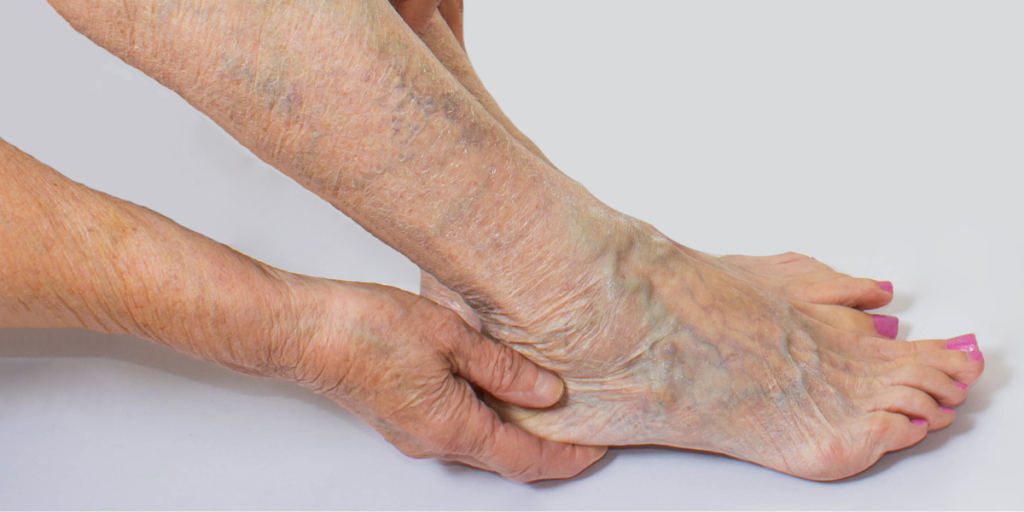Chronic Venous Insufficiency (CVI) is a condition where the veins in the legs fail to effectively return blood to the heart. This leads to symptoms like swelling, pain, varicose veins, and even skin changes. Managing CVI requires a multifaceted approach, blending medical treatment with practical lifestyle adjustments. These lifestyle changes, when implemented consistently, can significantly alleviate symptoms and improve quality of life.
1. Regular Physical Activity
One of the most effective ways to manage CVI is through regular physical activity. Exercise helps improve blood circulation, which is crucial for individuals with CVI. Walking, swimming, and cycling are particularly beneficial as they encourage the calf muscles to pump blood more efficiently. The key is to engage in low-impact exercises that don’t strain the veins further. Incorporating physical activity into your daily routine can reduce the risk of blood pooling in the legs and mitigate the symptoms of CVI.
2. Weight Management
Maintaining a healthy weight is vital for those with CVI. Excess weight places additional pressure on the veins in the legs, exacerbating symptoms like swelling and pain. A balanced diet rich in fruits, vegetables, whole grains, and lean proteins can support weight management. Additionally, limiting the intake of processed foods, salt, and sugar can help control weight and reduce the burden on your venous system.
3. Elevating the Legs
Elevating your legs above heart level several times a day can significantly reduce the discomfort associated with CVI. This simple practice allows gravity to assist in the return of blood to the heart, reducing swelling and easing the pressure on the veins. It’s especially beneficial after long periods of standing or sitting. Whether you’re watching TV or reading a book, take a moment to prop your legs up on a pillow to improve circulation.
4. Wearing Compression Stockings
Compression stockings are a staple in managing CVI. These specially designed stockings apply graduated pressure to the legs, helping veins move blood more efficiently. By wearing compression stockings during the day, you can reduce swelling, prevent the progression of varicose veins, and minimize discomfort. It’s essential to select the right level of compression with the guidance of a healthcare professional to ensure optimal results.
5. Avoiding Prolonged Sitting or Standing
For those managing CVI, avoiding prolonged periods of sitting or standing is critical. When you stay in one position for too long, blood tends to pool in the legs, worsening symptoms. If your job requires long hours of sitting or standing, make it a habit to move around every 30 minutes. Simple actions like stretching, walking, or even flexing your calf muscles can stimulate blood flow and prevent the exacerbation of CVI symptoms.
6. Staying Hydrated
Proper hydration plays a surprisingly significant role in managing CVI. Staying well-hydrated ensures that your blood remains less viscous, which makes it easier for the body to pump it through the veins. Dehydration can lead to thicker blood, increasing the risk of clot formation and making it more difficult for the veins to function efficiently. Aim to drink at least eight glasses of water a day, and consider more if you’re active or live in a hot climate.
7. Adopting a Low-Sodium Diet
Sodium is notorious for causing fluid retention, which can exacerbate swelling and discomfort in the legs of those with CVI. Adopting a low-sodium diet can help minimize fluid retention, thereby reducing the pressure on your veins. This involves reading food labels carefully and avoiding processed and packaged foods, which are often high in sodium. Instead, focus on fresh, whole foods and season your meals with herbs and spices rather than salt.
8. Quitting Smoking
Smoking is detrimental to overall vascular health and can aggravate the symptoms of CVI. Nicotine constricts blood vessels and impairs circulation, making it more difficult for veins to function properly. By quitting smoking, you can improve blood flow and reduce the risk of complications associated with CVI. If you’re struggling to quit, consider seeking support from a healthcare provider who can recommend resources and strategies to help you succeed.
Managing Chronic Venous Insufficiency requires a proactive approach that combines medical guidance with effective lifestyle changes. By incorporating regular physical activity, maintaining a healthy weight, wearing compression stockings, and making other adjustments like elevating your legs and staying hydrated, you can significantly alleviate the symptoms of CVI and improve your quality of life.
For those seeking comprehensive care for Chronic Venous Insufficiency, VidaVascular offers expert services to help manage and treat this condition effectively. Schedule a consultation today to explore your options. Take control of your vascular health!




